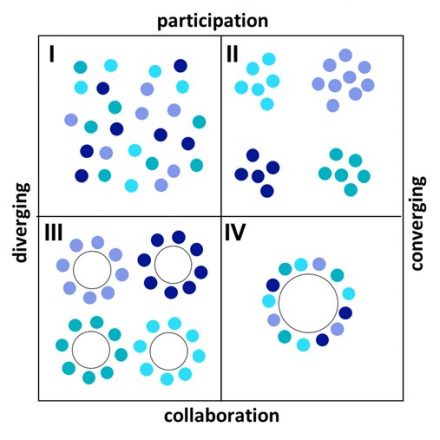The methodological approach for large-scale and influential participatory transportation planning
When developing sustainable mobility solutions and supporting sustainable urban lifestyles, it is essential to truly understand the perspectives of various kinds of urban dwellers. There is also an obvious need to integrate the perspectives of people to planning solutions to promote sustainable mobility patterns and to develop more influential participation. New, digital methods help to achieve these objectives and therefore we are currently working in Hupmobile project to create a toolbox of methods for public participation that combines the benefits that digital and traditional methods can provide.
Below I describe a framework that can help creating efficient, influential and solution oriented public participation process. The described framework that is based on the work by Staffans et al (2020a, b) will help to design the participatory process as a whole and to combine various types of method in different phase of the planning process. Other, more established frameworks, that we will also use to characterize various method of the toolbox (e.g. ladders of participation, types of methods, planning process phases etc. ) will also do their part to help picking the best methods for each situation.
Starting point: the differentiation between participation and collaboration
In planning theory, as in the practice of planning, the concepts of participation and collaboration are widely used to describe the form of actions taking place between multiple actors. What connects these two concepts is communication and interpersonal interaction as a foundation. Planning can be conceptualised as processes of intersubjective communication in the public sphere, through which dynamic mutual learning takes place (Healey, 1997). Participation is an individual’s right to participate in societal processes, whereas collaboration is a mode of working together. Participation as communication can be one-way but collaboration is multifaceted. This notion makes it important to understand what kind of knowledge can be produced in different phases of the planning process. Based on the findings how participation and collaboration are currently implemented in urban planning it is possible to identify two approaches: Large scale participation that produces a lot of information and represents various group of people well and more intensive collaboration in groups where new ideas and solutions are created.
Working together in groups has become central to understanding and conducting communicative planning (Innes, 2013). However, in planning practice, collaboration is often partial, ignoring the actual local stakeholders, communities of practice and especially the most deprived population groups. It is also siloed, as it takes place in separate processes among experts or public workshops, and the outcomes do not or hardly integrate in the local level and larger developmental objectives. And foremost, planners and scientists lack ways and skills to really work together with different kinds of people systematically throughout the planning process. As Rydin mentions (2007, p. 55-56), “it is much more difficult than often acknowledged to generate agreement between actors whose knowledge of an issue is rooted in very different experiences.” For these reasons, we need to better understand how and with whom we are working with when striving to create better living environments together.
The use of knowledge is a central element in achieving change. To overcome the parallel running and ineffective participation and collaboration processes, more coordination and awareness are needed concerning the purpose and goals of action in both processes.
The fourfold of various communicative actions
The fourfold presented in Figure 1 is based on a model by Staffans et al (2020a,b) that positions the various communicative actions by differentiating them in two dimensions: (a) the knowledge needs; and (b) the mode of working, that define four different types of communicative actions. In the figure, the dimensions related to knowledge needs distinguish the different goals of communication when diverging or converging planning knowledge and ideas. Divergence and convergence acknowledge both Rydin´s (2007) idea of opening up planning to multiple voices and closing down when testing the knowledge claims and Champlin and Pelzer (2018) notions on divergence and convergence when generating ideas. The dimensions related to the mode of working are differentiated by the methods and tools used and the number of participants who can be reached. This distinction is needed because the possibilities for communication with the broad public are fundamentally different from the communication in a small group. In the fourfold, participation refers to working and communicating with the broad public and collaboration refers to working in small, selected groups.
The fourfold explains and differentiates varying communicative actions according to the knowledge needs and working modes:
I Broad public produce diverse information or ideas for planning.
The goal is to get as many individuals as possible to give their knowledge input to the process. The output comprises of a large variety of data, information, knowledge and ideas as a foundation for further phases.
II Knowledge is converged (structured, organized) with the broad public.
The goal is to recognise what kind of support different ideas or knowledge claims get from people. The output includes valued knowledge claims or selected ideas (one or more) for further elaboration.
III Working together to make an input to the process.
The goal is to get knowledge and ideas from diverse groups to be elaborated further in the process. The output contains a variety of different approaches and ideas as a foundation for further phases.
IV Knowledge is converged in a smaller group.
The goal is to integrate and further develop planning knowledge and ideas in a collaborative manner. The output is a shared understanding of the direction and contents of the related planning process.


